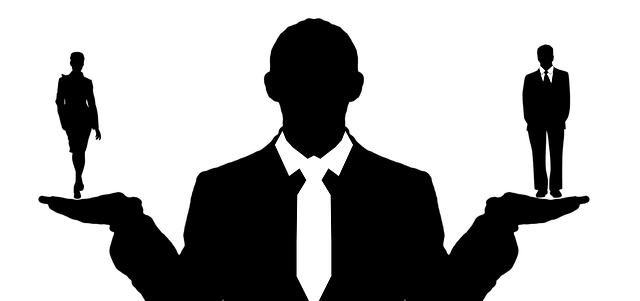Purchase order (PO) financing and invoice factoring are alternative funding options for businesses, catering to distinct cash flow needs. PO financing leverages future customer orders, offering longer-term solutions suitable for companies with lengthy payment terms, while invoice factoring provides immediate cash by selling invoices at a discount, ideal for rapid funding needs. Understanding these differences is crucial for businesses to make informed decisions between these strategies, aligning them with their financial goals and liquidity management.
Evaluating Purchase Order Financing against Invoice Factoring is crucial for businesses navigating cash flow challenges. This article delves into two distinct financing methods, offering insights into their nuances and ideal applications. We’ll explore how Purchase Order Financing facilitates funding at key stages of the supply chain, while Invoice Factoring provides immediate liquidity by converting invoices into cash. By analyzing time frames, cash flow impacts, credit score effects, and specific use cases, this guide equips businesses with knowledge to make an informed decision between these two powerful tools.
- Understanding Purchase Order Financing
- – Definition and how it works
- – Benefits and use cases
- Unraveling Invoice Factoring
- – Explanation of the process
- – Advantages and common scenarios where it's used
Understanding Purchase Order Financing

Purchase order financing is a type of funding option available to businesses, particularly those in manufacturing or wholesale sectors. It involves securing funds by using outstanding purchase orders from customers as collateral. In this arrangement, a financier provides capital before the goods are shipped and invoiced, allowing businesses to access working capital more quickly than traditional factoring or bank loans. This can be especially beneficial for companies with lengthy payment terms, helping them manage cash flow and cover immediate expenses.
When comparing purchase order financing to invoice factoring, it’s important to note the key differences. In factoring, a business sells its invoices (or accounts receivable) to a third-party factor for an upfront cash advance. This method is often faster but may not be suitable for long-term funding needs as it doesn’t utilize future sales directly. Purchase order financing, on the other hand, offers longer-term solutions by aligning with the natural sales cycle, providing more stability and potential cost savings in the long run.
– Definition and how it works

– Benefits and use cases

Purchase order (PO) financing and invoice factoring are two distinct financial tools used by businesses to manage cash flow, each with its unique benefits and use cases.
PO financing involves funding against an upcoming invoice, where a lender provides capital based on the value of the goods or services yet to be delivered. This is particularly advantageous for businesses that experience long payment terms from clients. By utilizing PO financing, companies can accelerate their cash flow, enabling them to cover immediate expenses and invest in growth opportunities without waiting for invoices to be settled. In contrast, invoice factoring offers a more direct approach by selling outstanding invoices to a third-party factor at a discount. This method provides immediate funding, allowing businesses to access quick capital to meet operational needs, especially during cash flow shortages or unexpected expenses. Invoice factoring is often preferred by companies with consistent and reliable sales cycles, as it streamlines the accounts receivable process and can free up significant financial resources.
Unraveling Invoice Factoring

Invoice factoring is a financial solution that has gained popularity among businesses, especially those in need of quick cash flow. In simple terms, it involves selling outstanding invoices to a third-party factor at a discount. This process provides businesses with immediate funding, allowing them to access capital tied up in accounts receivable. When comparing purchase order financing vs invoice factoring, understanding the nuances of each method is essential.
Invoice factoring can be particularly beneficial for companies dealing with large volumes of invoices and seeking rapid funding. It streamlines the collection process by delegating it to the factor, freeing up time and resources. However, business owners should be mindful of the fees involved, as they can vary and may impact overall profitability. Unraveling these financial strategies helps businesses make informed decisions based on their specific cash flow needs and long-term financial goals when considering purchase order financing vs invoice factoring.
– Explanation of the process

In the realm of business finance, both purchase order financing and invoice factoring offer solutions for companies seeking to optimize cash flow. Purchase order financing involves a financial institution advancing funds based on outstanding purchase orders from customers. This method provides businesses with working capital before the invoice is even issued or paid, enabling them to meet their operational needs promptly. On the other hand, invoice factoring involves selling accounts receivable (invoices) to a third-party factor for immediate cash. The factor assumes the risk of non-payment and collects the full amount from the customer on your behalf.
Understanding these processes is crucial when deciding between purchase order financing vs invoice factoring. While purchase order financing offers early access to funds, it may require a strong credit history and can tie up resources until the order is fulfilled and payment is received. Invoice factoring, in contrast, provides immediate liquidity but involves giving up future receivables, which could impact cash flow management if not managed prudently. The choice depends on your business’s specific needs, financial health, and strategic objectives.
– Advantages and common scenarios where it's used

Purchase order financing and invoice factoring are two distinct methods for businesses to manage their cash flow, each with its own set of advantages. Purchase order financing is ideal for companies that have a consistent need for working capital to fund production or inventory purchases. It involves securing funding based on future sales orders, allowing businesses to access capital before the customer makes the payment. This method is particularly useful in industries where long payment terms are common, such as manufacturing or wholesale trade.
On the other hand, invoice factoring is a solution for businesses looking to convert their outstanding invoices into immediate cash. In this process, a factor (a third-party financier) purchases these invoices at a discount and takes over the accounts receivable. This option is beneficial when a company needs quick access to funds, especially if they face tight cash flow or have customers with slow payment cycles. It simplifies the accounts receivable management process and provides immediate capital, making it suitable for small businesses or those experiencing seasonal fluctuations in revenue.






